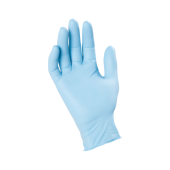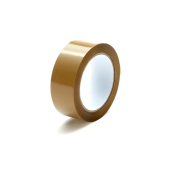When selecting single-use gloves, you may find yourself unsure about the best material for your needs. This guide will clarify the differences between nitrile, vinyl, and latex gloves, ensuring that by the end, you’ll have all the knowledge needed to make an informed decision. Leveraging our expertise in the field, we’ll also point you toward practical solutions for your next steps, like selecting the ideal type of nitrile gloves for more specialized tasks. For a comprehensive guide on nitrile gloves, see our Buyer’s Guide.
Overview of Nitrile, Vinyl, and Latex Gloves
| Feature | Nitrile Gloves | Vinyl Gloves | Latex Gloves |
| Material | Synthetic rubber (nitrile butadiene) | Synthetic PVC resin | Natural rubber |
| Durability | Excellent resistance to punctures, chemicals, and abrasions | Moderate durability, best suited for low-stress tasks. | High durability but sensitive to oils and some chemicals |
| Fit and Comfort | Snug fit, mimics latex flexibility | Loose fit, less tactile sensitivity | Exceptional comfort and elasticity |
| Allergy Concerns | Hypoallergenic | Hypoallergenic | Can trigger latex allergies |
| Cost | Mid-range | Low-cost | Moderate |
| Typical Use Cases | Healthcare (surgery, examinations), food handling, chemical handling in labs and industries | Low-risk tasks like sandwich preparation, food packaging, and light cleaning duties | Medical applications (dentistry, hospital use), tattooing, and household cleaning |
Nitrile Gloves: The Durable All-Rounder
Nitrile gloves are made from a synthetic rubber compound known as nitrile butadiene. This material is renowned for its durability and resistance to a wide range of substances, making it an ideal choice for tasks that require chemical-resistant gloves. If you’re looking for a reliable option that provides protection and comfort, nitrile gloves are a top choice.
Key Benefits:
- Chemical Resistance: Perfect for tasks involving oils, solvents, or harsh cleaning agents.
- Durability: Highly resistant to punctures, making them suitable for medical and industrial use.
- Hypoallergenic: Unlike latex, they don’t pose allergy risks.
For a full selection of nitrile gloves, visit our product page.
Vinyl Gloves: Affordable and Versatile
Vinyl gloves are made from polyvinyl chloride (PVC). They are an economical option for tasks that don’t require high durability or chemical resistance. These gloves are often used in food service and other low-risk environments.
Key Benefits:
- Cost-Effective: Vinyl gloves are typically the most affordable option.
- Hypoallergenic: Suitable for users with sensitivities to latex.
- Ease of Use: Lightweight and easy to put on or remove.
However, their Lower durability and looser fit make them better suited for general tasks rather than precision work. Explore vinyl glove options here.
Latex Gloves: The Classic Choice
Latex gloves, made from natural rubber, offer exceptional flexibility and tactile sensitivity. They are often the first choice for applications that require precision and a snug fit, such as medical procedures and laboratory work.
Key Benefits:
- Superior Comfort: Provides a natural fit, reducing hand fatigue during extended use.
- Elasticity: Stretches easily without tearing.
- Biodegradability: An eco-friendly option compared to synthetic gloves.
Latex gloves may not be suitable for individuals with latex sensitivities, making nitrile or vinyl excellent alternatives. If you need latex-free gloves, nitrile or vinyl are excellent alternatives.
How to Choose the Right Gloves for Your Needs

Selecting the right gloves depends on several factors, including the level of protection, comfort, and cost you require.
Additionally, environmental considerations like biodegradability can be important for eco-conscious users, with latex gloves offering a more sustainable option compared to synthetic alternatives. Below are common scenarios and the recommended glove type:
- Medical Use: Choose nitrile or latex gloves for their fit and durability.
- Food Handling: Opt for vinyl gloves, as they are cost-effective and safe for food contact.
- Chemical Handling: Use nitrile gloves for maximum resistance to substances requiring higher levels of protection.
For a broader guide on disposable gloves, see How to Choose the Best Disposable Gloves – A Buyer’s Guide.
Key Considerations When Buying Gloves
When purchasing gloves, it’s important to weigh several factors to ensure you make the right choice. Start by evaluating the materials—each type is suited for different tasks and environments. Additionally, selecting the correct size is crucial to maintain comfort and dexterity during use.
Finally, don’t forget to check compliance with European industry standards, such as EN 374, which certifies chemical protection for certain gloves. Learn more about EN Standards and Certifications from this guide on Wikipedia.
Comparing Costs and Availability
While vinyl gloves are the most affordable, nitrile gloves offer the best balance between cost and performance. Latex gloves, though moderately priced, May require latex-free options for users with sensitivities, which could slightly affect cost.
For affordable solutions, check out our range of disposable gloves.
Final Thoughts
We hope this guide has helped you navigate the key differences between nitrile, vinyl, and latex gloves, empowering you to choose the best option for your specific needs.
To keep this resource dynamic and engaging, we’ll continue to update it with new insights and trends. For even more guidance, explore our additional resources to stay informed and confident in your choices.
Whether you’re prioritizing durability, comfort, or cost, we’ve got you covered with practical solutions and expert recommendations. Ready to take the next step? Explore our full range of cleanroom gloves or find specialized gloves tailored to your unique requirements.
Still have questions or need personalized advice? Our team is here to guide you in ensuring safety and confidence with every purchase. Let us support you in making your next choice the perfect one.
For additional insights, see related articles like How to Choose the Right Chemical Resistant Gloves, which covers materials and safety standards for Environments requiring higher safety standards, or Vinyl Gloves: The Affordable Solution for Industrial Safety, highlighting cost-effective options for industries like food service and light manufacturing.
– The Droppe Team
Frequently Asked Questions (FAQs)
Nitrile gloves are not as biodegradable as latex gloves because they are made from synthetic materials. However, some manufacturers are developing eco-friendly nitrile options that decompose faster than traditional nitrile gloves.
It is not recommended to reuse disposable gloves, regardless of their condition. Reusing gloves can compromise hygiene and increase the risk of cross-contamination or reduced effectiveness.
To find the correct glove size, measure the circumference of your palm at its widest point (excluding the thumb) and consult the sizing chart provided by the glove manufacturer. A snug fit ensures dexterity and comfort during use.
Vinyl gloves are not ideal for handling hot foods as they have a lower heat resistance compared to nitrile or latex gloves. They may deform or break under high temperatures.
Powdered gloves contain a light coating of powder (usually cornstarch) to make them easier to put on. Powder-free gloves are preferred in environments like healthcare or food preparation, as the powder can cause contamination or irritation. Your choice depends on the application and personal preference.

















